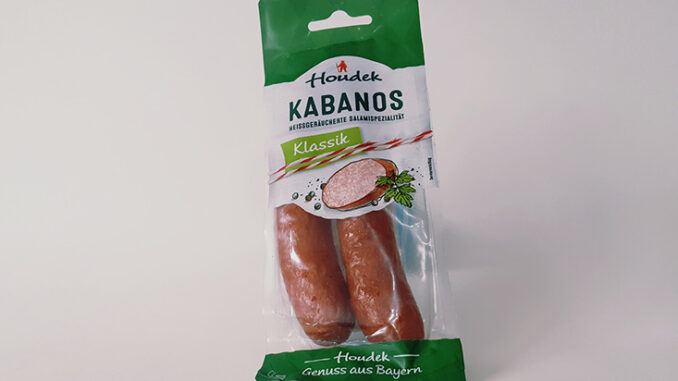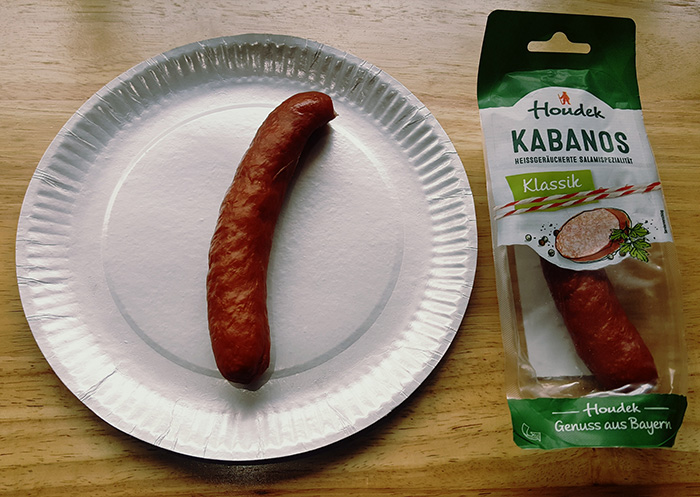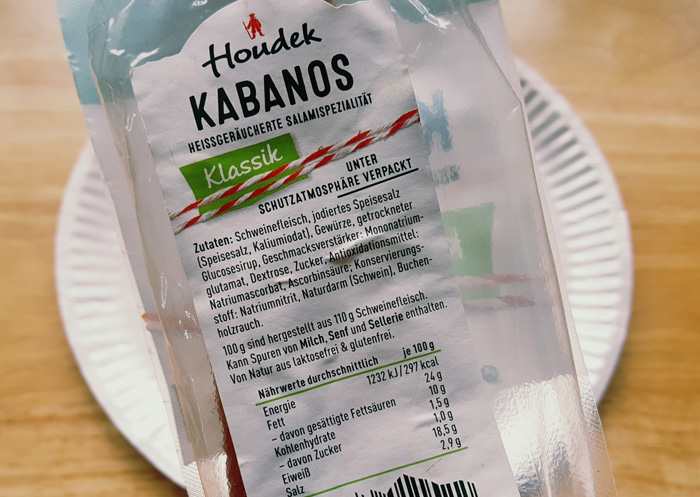
A friend of mine who has been working in Germany for the past two years has recently sent me some treats that literally has my name on it. One of those treats he got from their grocery is the Houdek Kabanos. It turns out that kabanos, which is also my last name, is a Polish dried sausage. Haha no wonder I’m so yummy.
Kidding aside, I’m here to examine this product and taste test it to see if it pairs up with my Filipino taste buds.
The sausage was nicely wrapped in a clear plastic. It wasn’t vacuum sealed. Which was concerning for me at first because I’m used to see dried meat in vacuum sealed plastics for safety and preservation purposes. But as I opened it, I didn’t stumble upon any issues. No foul smell or any signs of contamination, reassuring me that the sausage was prepared and packed properly.
As for the taste, it’s nicely smokey with the right amount of saltiness. Though I would personally prefer a little bit more pepper be included in its ingredients. But who am I to dictate what a Polish sausage should taste like?
It’s not exactly too dry. Its light oil actually adds to its juiciness. I see this being perfect to be dipped on mustard and even eaten with a bread bun.
What makes this kabanos so great is the snap on every bite. The skin of this sausage is so amazing it defeats most Filipino sausages and longganisas that I know of, and I’m sad about it. I’m sad because I want to be able to buy this regularly from a palenke. On every bite I made on this, I’m trying to recall in my mind what Pinoy sausages we can compare it to. We Pinoys have some good juicy hotdogs and we’re proud of our awesome longganisas, but I haven’t eaten one yet with this kind of snappy skin. There’s a cooking technique behind this kind of skin that is not yet well talked about in Filipino home cuisines. That snap is a small but championing detail in the world of sausage competitions.
Lastly, the question every Filipino have in mind: Can we have this as an ulam with rice? Heck yeah, it’s ulam-mable. Let’s skip the bread buns and pull out our rice cookers. 😀
I don’t understand the language the backside of the packing is written with. But Google Translate says “100 g are made from 110 g of pork“. I’m assuming that this 100 grams of sausage is just a regular sized sausage in Poland. But would be called a “jumbo” in the usual marketing of Filipino sausage brands.
I am very much intrigued with Polish sausages just because of this brand. I would like to learn how to make this one day. But first, maybe I should learn some German first to understand the ingredients on this packaging… auf Wiedersehen!



